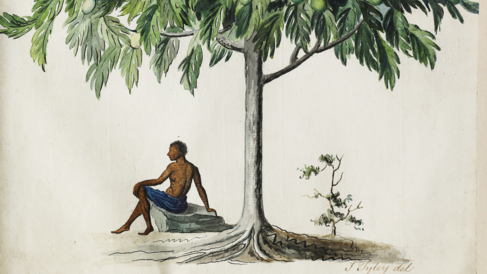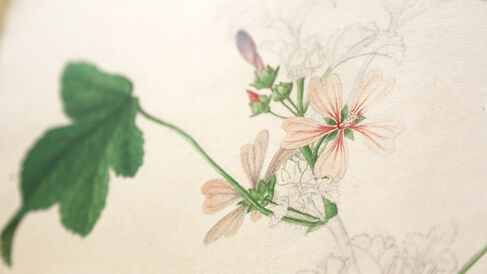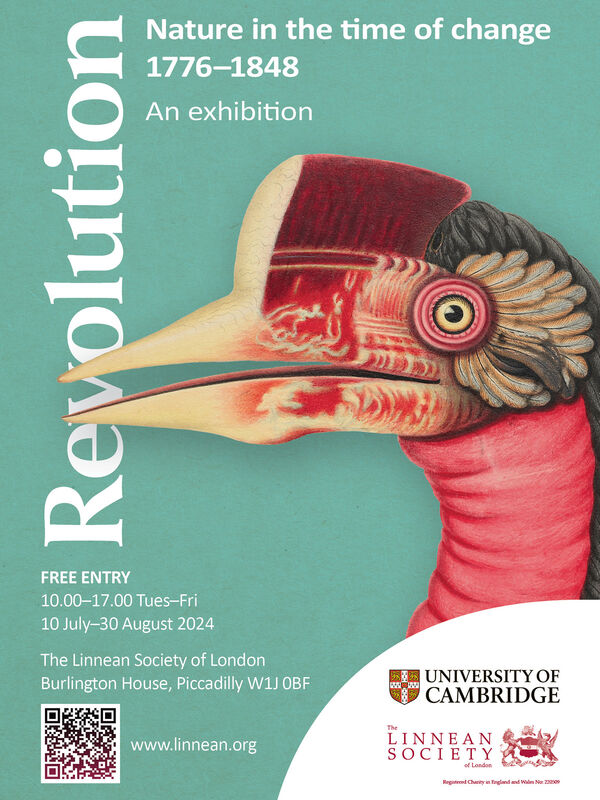
Breadfruit tree, Artocarpus incises, John Tyley (c.1800).
A new exhibition at the Linnean Society highlights the crucial role of indigenous artists in one of the most important periods for the progression of natural history knowledge.
The decades around 1800 saw the discovery of more species that were new to the Western world than ever before or since, and lay the ground for a revolution in the ideas and practice of natural history.
Bringing together documents, specimens and stunning illustrations – some displayed for the first time – the exhibition at the Linnean Society in London explores the changing practices of natural history in a period often referred to as the ‘age of revolutions’, examining the preparations made to commence global travel, the practices of collecting, the keeping of records and illustrating nature, and publishing the natural world.
Featuring artifacts from voyages such as Robert Brown and Matthew Flinders’ circumnavigation of the Australian continent in 1801, instructions for collecting on the first British diplomatic mission to China and stunning illustrations by indigenous artists in India and the West Indies, the exhibition challenges the widely-held notion that scientific progress in the field of natural history was the result of solitary work by Western European scholars.
“The aim of the project is to create a better understanding that the ideas we see emerging in this period – natural systems, systems of deep time, systems of classifying nature – come about much more as a collaborative enterprise with knowledge coming from many sources across the world,” says Dr Edwin Rose, from the University of Cambridge Department of History and Philosophy of Science.
“They’re not just the singular ideas of lone scientists working museums or universities. It actually involves a really diverse and interesting group of people, many from indigenous communities, who are doing the work for their own political and societal reasons.”
Between the time of the American Revolution of 1776 and the European revolutions of 1848, practices of natural history became enmeshed with the political, social and economic interests of societies across Polynesia, Africa, Asia, the Americas and Europe. Throughout these processes, information was exchanged, integrated and adapted to suit a broad range of interests.

Engelbert Kaempfer and Joseph Banks (ed.), Icones Selectæ Plantarum (1791). Kaempfer’s botanical drawings, published long after his death in 1716 by Banks, introduced many Asian plants to a large audience in Europe.
‘Revolution: Nature in the Time of Change 1776–1848’ sets the work of this time, and the people that practiced it, in the context of these shifting political landscapes.
“All of these images and objects embody specific political beliefs and interests of the time, which saw the abolition of the British slave trade in the West Indies – though not slavery itself – various revolutions in India,” says Rose. “And who these indigenous artists are siding with and choosing to work with gives you insight into their own political motivations and revolutionary engagement.”
Highlights include an exquisite drawing of a hornbill, shown on the exhibition poster, that was used to classify the specimen, and a striking painting of a breadfruit tree by John Tyley, a free person of colour working in the St Vincent Botanic Garden. Created independently rather than commissioned, Tyley’s painting is a rare example of a black artist painting a black, likely enslaved, subject. It is an image of resistance, with the breadfruit tree depicted in a conical shape resembling the ‘Liberty Tree’ that became a symbol of the French Revolution.
Further information
‘Revolution: Nature in the Time of Change 1776–1848’ is on display at the Linnean Society, Burlington House, Piccadilly, London, W1J 0BF.
Entrance is free and the exhibition is open Tuesdays to Fridays, 10.00–17.00, from 10 July until 30 August 2024.
The exhibition is co-curated by Dr Edwin Rose and Professor Staffan Müller-Wille (Department of History and Philosophy of Science, University of Cambridge) and Dr Isabelle Charmantier (Head of Collections, Linnean Society).
The exhibition is part of 'Natural History in the Age of Revolutions', an interdisciplinary research project at the University of Cambridge funded by the Arts and Humanities Research Council and in partnership with the Linnean Society of London, State Library of New South Wales, The Natural History Museum, London, The Royal Botanic Gardens, Kew and University of Otago, New Zealand.

Exhibition poster
